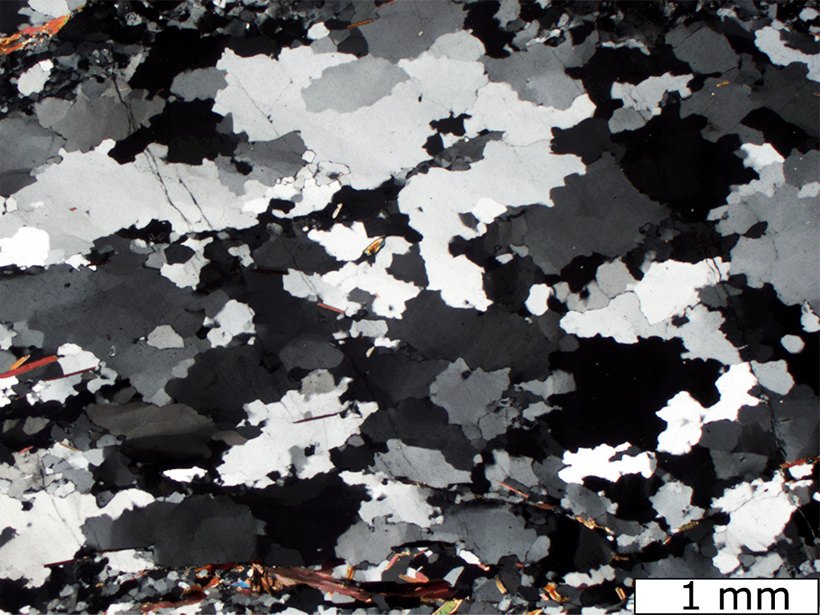Source: Journal of Geophysical Research: Solid Earth
To understand the evolution and assembly of continents, it is necessary to comprehend the processes controlling the deformation of quartz, the second most common and the weakest mineral found in abundance in the continental crust. Because experiments have repeatedly demonstrated that water facilitates the internal deformation of this mineral, the presence of water in quartz grains is presumed to play a crucial role in the deformation of Earth’s crust.
Now, however, Kilian et al. present the first data to show that “dry quartz,” which has a very low water content, can deform at high temperature (~550°C) by crystal plasticity at low stresses and the rates of strain found naturally in the Earth’s crust. Using Fourier transform infrared spectroscopy, the team compared the amount of water in both original and recrystallized quartz grains in Italy’s Permian-age Truzzo granite, which was deformed and metamorphosed during the Alpine mountain-building event.
Surprisingly, despite the presence of microscopic structures in the recrystallized quartz grains that indicate they had been deformed by crystal plasticity and under low-stress conditions, the team found very little water in their interiors. By contrast, the original, magma-derived quartz grains had areas of both low and high water content, including numerous fluid inclusions. The lack of fluid inclusions in the recrystallized grains and the overall mineral assemblage both suggest that water was likely present between the grains when the rock was deformed.
The team concludes that the presence of water between the grains, along with the very small amounts of water detected within them, were sufficient to enable crystal plastic deformation within the quartz. The findings suggest that under natural, high-temperature conditions in the Earth’s crust, quartz may deform via weakening processes that cannot be duplicated in laboratory experiments, and that crustal rocks with low water content are not necessarily strong. (Journal of Geophysical Research: Solid Earth, doi:10.1002/2015JB012771, 2016)
—Terri Cook, Freelance Writer
Citation:
Cook, T. (2016), Despite dryness, quartz grains can deform in Earth’s crust, Eos, 97, https://doi.org/10.1029/2016EO053675. Published on 06 June 2016.
Text © 2016. The authors. CC BY-NC-ND 3.0
Except where otherwise noted, images are subject to copyright. Any reuse without express permission from the copyright owner is prohibited.

